A fair result at Bloomfield Road as both teams enjoyed a period of domination each, but neither could take the chances handed to them. Stoke had the better of the chances, Blackpool better of the ball, but by the final whilst both teams will see it as a point gained.
Line ups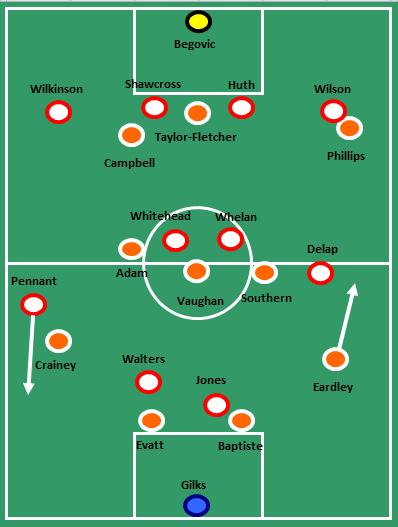
4-3-3 v 4-4-2
This was a straightforward battle between a 4-3-3 and a 4-4-2 giving Blackpool the numerical advantage in the centre of the pitch. From a tactical point of view the pattern for the first half was set early on, Blackpool passed the ball around in midfield, Stoke looking to pressure Blackpool on the ball. Blackpool looked to get the ball wide and in to the channels, whilst Stoke looked for territorial gains, using Kenwyne Jones’ aerial ability to set up attacking moves.
Scrappy
The first half saw Blackpool dominate the passing game, even though Stoke had the better chances. It is interesting to see how Blackpool’s passing dropped off in the second half as Stoke worked harder to pressurise Blackpool who then struggled to put passes together and started to hit longer passes instead of building play. You can see from the graph below how Blackpool’s players has less passes in the first half compared to the second, as a team they managed 123 less passes.
Every player with the exception of Keith Southern made less passes in the 2nd half.
Having less passes in the second half isn’t a sign of anything really, other than the opposition must be seeing more of the ball, however, Blackpool’s passing quality declined as well in the second half as they failed to find team mates more often, through sloppy play, rushed passes and longer, less controlled passing. You can see below how each player had a lower pass completion in the second half.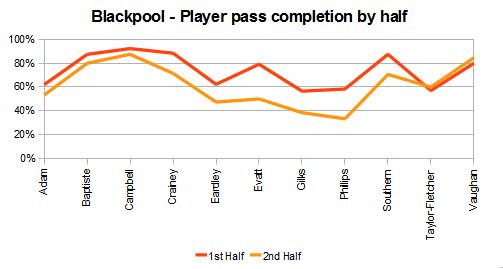
Across the team Blackpool’s pass completion dropped.
Just as a final illustration of how Blackpool stopped playing out from the back, take a look at Matthew Gilk’s distribution from the first to the second half. In the first period, he made shorter passes, but in to the second he did that only once. If this was a clear change of game plan by Ian Holloway then it was a tweak that failed to show measurable reward.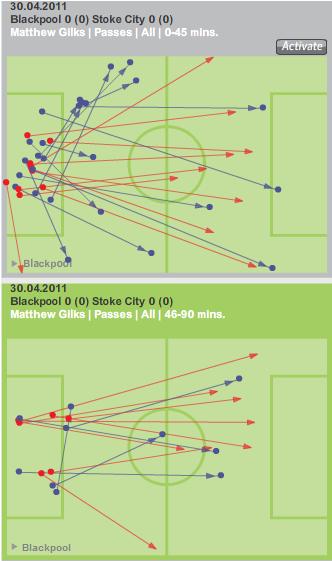
Getting longer by the minute.
Case for the defence
Stoke countered everything that Blackpool could do in the first half, particularly with hard work and resilience in their defence. You can see below how many more interceptions they had the first half.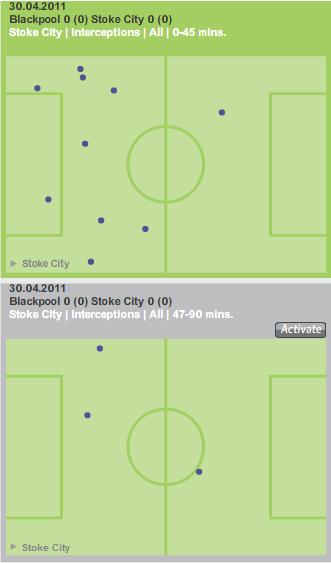
Working hard in the first half to stifle Blackpool’s dominance.
More importantly, Stoke excelled on the ground when it came to standing up to Blackpool. You can see below how they lost only one tackle on the ground in the first half, well away from danger as they frustrated Blackpool before setting up their stronger second half.
Near perfect in the tackle to stop Blackpool in the first half.
Scrappy
In the second half Stoke worked harder to deny Blackpool time on the ball and when they got the ball they used it well, stretching the play wide, making high balls from back to front and generally forcing Blackpool backwards. You can see how Stoke’s aerial duels changed in nature from one half to the next.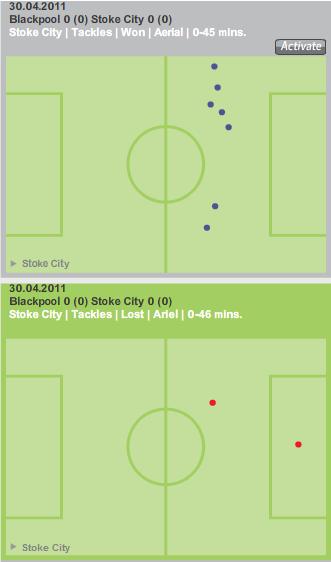
One aerial duel in the Blackpool box in the first half.
The aerial duels Stoke contested in the first half could be considered ‘set ups’ and not direct attacking threats, however, look how in the second half the aerial contest shifts to the Blackpool box as Stoke applied their pressure.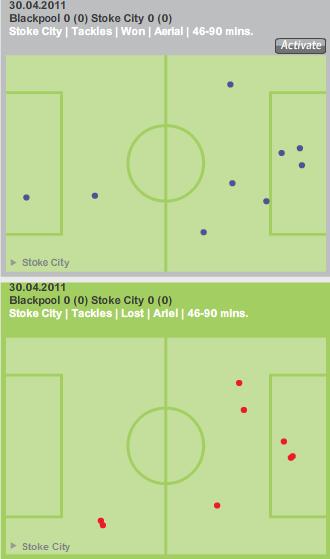
Pushing Blackpool deeper.
Break free
Back in December Charlie Adam was afforded a lot space and created several penetrating passes in to the Stoke box, in this match under much more pressure from the Stoke midfield (particularly Glenn Whelan) he couldn’t get his passing together and he and Blackpool failed to make telling passing in to the heart of the Stoke box. Stoke must take great credit for having such an organised and resilient defensive unit.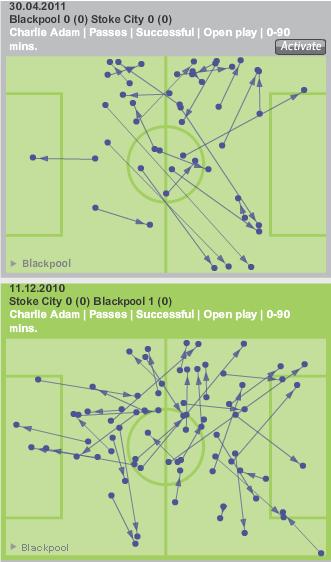
Charlie Adam couldn’t complete passes in to key areas.
Long gone
Blackpool had a clear plan last time out as a counter measure to the long throws made by Stoke, essentially the back four remained in position whilst Charlie Adam and Luke Varney picked up the aerial threats, leaving the back four in place to deal with the fall out. In this match, that approached remained, but it appeared that Adam dropped in to the back four as Ian Evatt stepped out to man mark Jones. In truth Blackpool handled the threat well, out of 12 long throws, Blackpool won 9.
3 out of 12 long throws were successful
Moving on
Both teams deserve credit for working hard when a stern wind was whipping across and around Bloomfield Road, Blackpool have gone 180 minutes against Stoke without conceding which they will take great heart from, whilst Stoke are working towards their FA cup final. Blackpool head to White Hart Lane and will hope to attack Spurs in order to try to build confidence ahead of their final home game of the season against Bolton. The Bolton match will most probably decide where the Tangerines will be playing their football next season.
Share this article



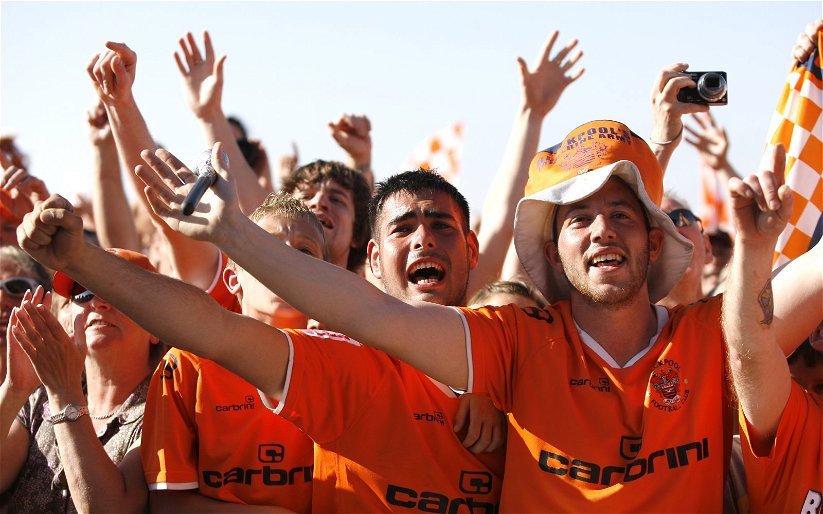

just take some points of United on the last day of the season – please!